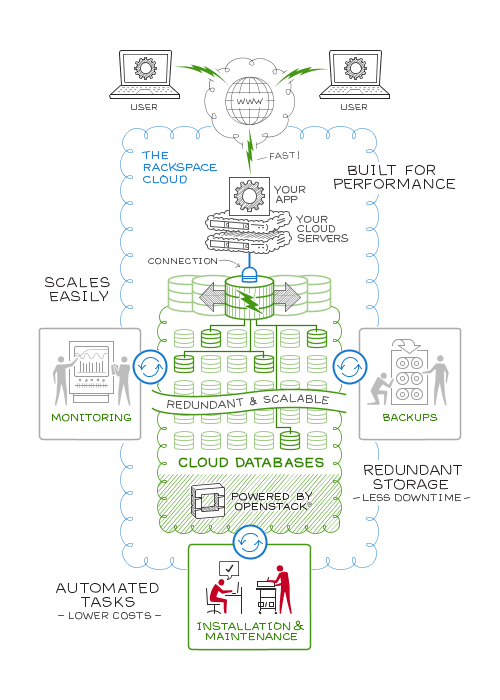Rackspace Cloud Databases API v1.0#
Last updated: Aug 21, 2023
The Rackspace Cloud Databases service powered by OpenStack enables developers to easily provision database instances of varying virtual resource sizes without the need to maintain and/or update the database engine through a simple Representational State Transfer (REST) web service interface.
The following figure shows an overview of Cloud Databases Infrastructure:

Note
Rackspace recommends that Cloud Databases users back up their data using backups in Cloud Databases.
This guide is intended to assist software developers who want to develop applications by using the REST application programming interface (API) for the Cloud Databases service.
To use the information provided here, you should have a general understanding of the service and have access to an installation of it. You should also be familiar with the following technologies:
RESTful web services
HTTP/1.1
JSON serialization format
Use the following links to jump directly to user and reference information for the Cloud Databases service REST API:
Note
You can also use Cloud Databases from the Cloud Control Panel.